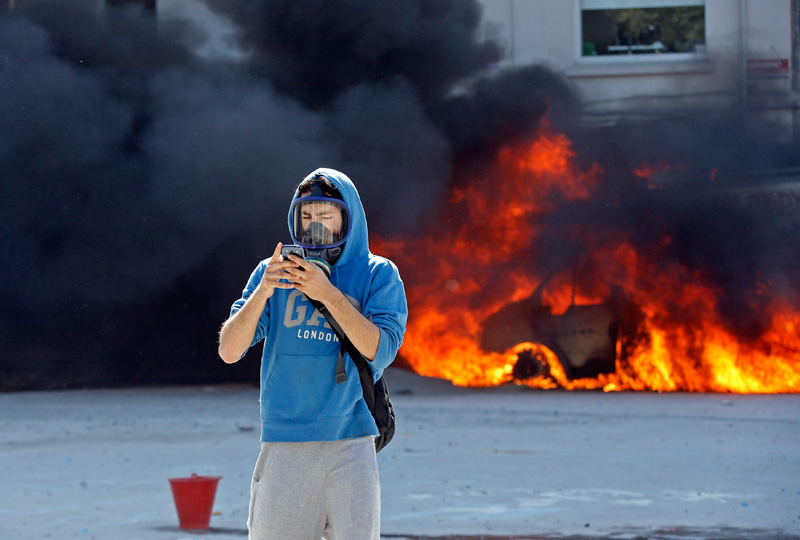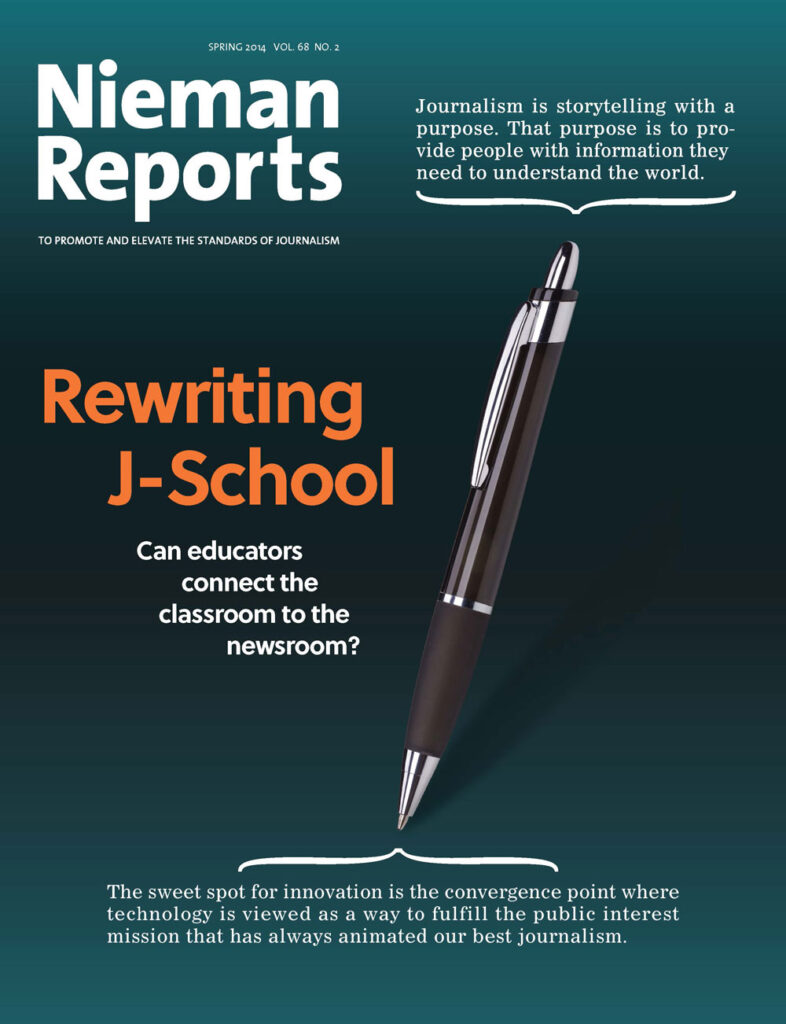In December of 2011, Turkish military jets bombed the village of Uludere, about five miles from the border with Iraq, killing 34. Was the attack a tragic mistake or a planned strike on suspected Kurdish separatists? Were the casualties terrorists, smugglers, or innocent citizens? It was impossible for anyone in Turkey to find out because the media did not report the deaths.
Serdar Akinan, a journalist with the Turkish mainstream daily Aksam, traveled to Uludere on his own to cover what’s now known as the Roboski massacre. There, he interviewed eyewitnesses and relatives of the dead. He covered the funerals and offered his perspective on what happened. He took pictures of the grieving relatives and the massive funeral procession that brought the corpses, wrapped in blankets, from the site of the massacre, and he circulated the images via Twitter and Instagram.
Akinan did what journalists throughout Turkey all too often refuse to do: report a story that might cast the government in a bad light. Sometimes, the prime minister tells the media not to cover certain stories. Sometimes, the media censors itself. Nine months after he took to social media to tell the story of Uludere, Akinan was fired from Aksam. He has said he believes he was fired because Prime Minister Recep Tayyip Erdogan complained about his columns criticizing the Turkish government’s policies regarding treatment of the country’s Kurdish ethnic minority, among other issues.
A couple of weeks after the massacre, two friends and I were sitting in an Istanbul bar talking about what Akinan had done and about the sorry state of our nation. Erdogan’s Justice and Development Party (AKP) came to power in 2002 promising to reduce the military’s influence on politics, reverse the exclusion of Islam from public life, protect the rights of the Kurds, and enhance civil liberties. But since then the AKP has increasingly imposed a kind of one-party rule. The government uses its power under antiterrorism and criminal defamation laws to punish dissent. A series of high-profile journalists have lost their jobs after public reprimands from Erdogan, and most of the mainstream Turkish press stay well away from stories, like the Uludere attack, that might harm the government’s image.
We felt deeply frustrated by what the Turkish media was—and wasn’t—delivering. All three of us were in our 20s, and we wanted to consume news in real time. We all used Twitter, and we asked ourselves: Do we really need microphones emblazoned with the name of a TV station to let people know what’s happening? So we created a Twitter account, calling it 140journos—“140” for the character limit in a tweet, and “journos” as the slang reference for what we had no training to be: journalists.
Do we need mics with a TV station’s name to let people know what’s happening?
We started covering the news in earnest in January of 2012. We skipped our college classes to attend trials and protests, and we shared via social media photographs, audio and video recordings, and reports of what we witnessed. We covered leftist factions supporting arrested journalists, radical Islamic groups protesting abortion, and a trial involving game-fixing by one of the nation’s favorite football clubs. We were so new to all this that when a Turkish media critic told us we were engaged in “citizen journalism,” we had to look up the term on Wikipedia. Months later, Zeynep Tufekci, a Turkish-born professor at the University of North Carolina-Chapel Hill who studies the intersection of technology and society, told me, “This is not ‘citizen journalism.’ This is ‘journalistic citizenship.’” Journalistic citizenship is an important model, not just for my country but for other countries where people aren’t getting the news they need.
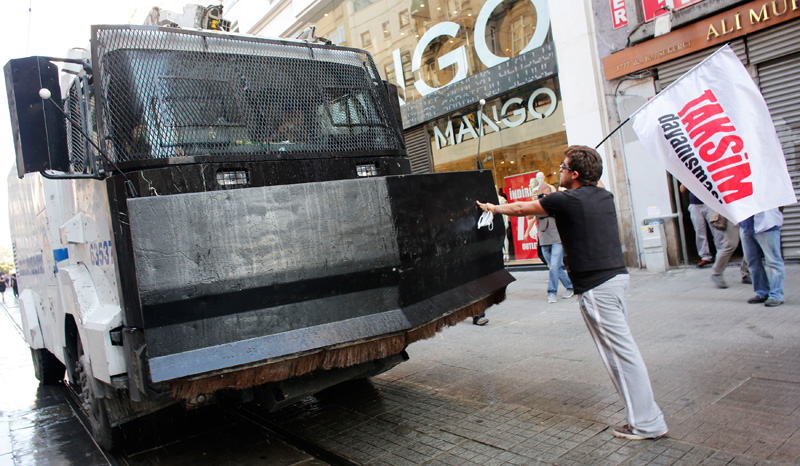
In February, audio appeared on YouTube and was circulated via Twitter purporting to record Erdogan, whose government faces a corruption investigation, ordering his son to get rid of large sums of cash from a safe in his house. Erdogan said the tapes were fabricated to discredit his government. He fired key officials involved in the corruption probe and tightened control over the judiciary. In March, Erdogan banned Twitter; the nation’s highest court overturned the ban two weeks later. The move made little difference to Turks, including my mother, who used anonymous virtual private networks and alternative domain name systems to get around it.
The Turkish government is suppressing the media with “strong-arm tactics”
According to a recent report by Freedom House, a Washington-based nonprofit that promotes civil liberties, the Turkish government is increasingly resorting to “a variety of strong-arm tactics to suppress the media’s proper role as a check on power,” such as publicly railing against critical journalists and launching tax investigations into media outlets that question it. Turkey is also the world’s most aggressive jailer of journalists, with the Committee to Protect Journalists reporting that 40 journalists are currently imprisoned as a result of their work, putting the country ahead of China and Iran. This is the social and political backdrop against which we created 140journos.
The spring 2013 protests in Istanbul’s Gezi Park marked a turning point for us. The demonstrations began when a small group of environmental activists gathered to block government plans to replace Gezi Park with a commercial development. News of the occupation spread via social media and thousands converged on the park. Police routed them with tear gas and water cannons, which drew tens of thousands of protesters to Taksim Square, where Gezi is located. Over the next two weeks, occupations took place across the country, with some 3.5 million people participating, according to the government’s own estimates.
Early on, the mainstream press largely ignored the protests. Not even Haberturk, a TV station right around the corner from Gezi, broadcast live from the scene. CNN Turk, one of the largest television stations, aired a documentary about penguins during a violent clash between police and protesters. If the mainstream media wasn’t going to document the protests, we decided, then the protesters themselves would.
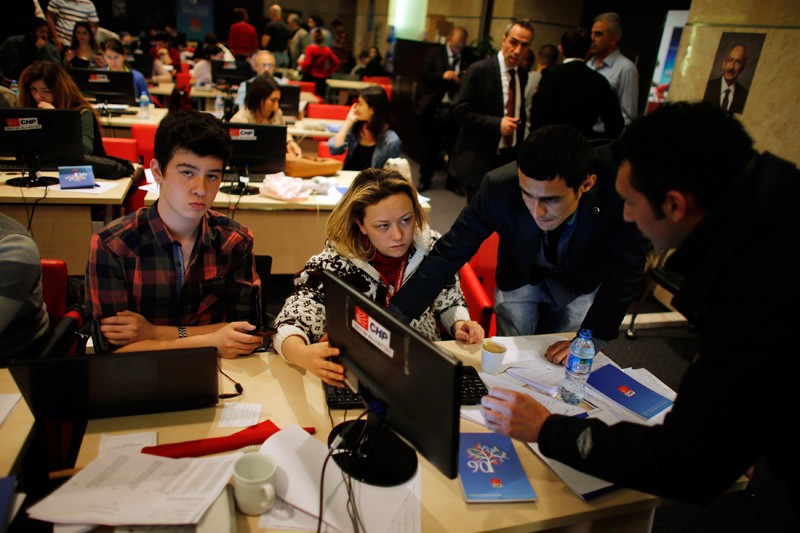
We reported the tear gas attacks and other injustices that took place during the Gezi Park protests. But we also debunked misinformation. At one point, accusations circulated on social media that Turkish police had attacked citizens with Agent Orange, which was used during the Vietnam War to defoliate the jungle. Members of 140journos conferred with chemical engineers and determined the canisters in question contained nothing more than colored smoke. Before Gezi, 140journos produced about 400 tweets a month. But during June 2013, we shared more than 2,200 tweets, videos, and audio recordings, and our Twitter followers increased from roughly 8,000 to about 45,000.
Turkey has about 12 million active Twitter users, roughly a third of the online population. We have more than 300 volunteer content producers all across the country, including a survivor of the Uludere attack. As the number of Turkish citizens feeding information to 140journos grew, we shifted gears. Instead of doing all the reporting ourselves, we focused on collecting, categorizing, validating and Storifying the news content sent to us. To verify news reports, we use free tools like Yandex Panorama (Russia’s version of Google StreetView) and TinEye, a search service to help determine if images are new or pulled from websites.
With 300 volunteer reporters, 140journos has become a clearinghouse for news
To monitor the flow of news tips, 140journos uses TweetDeck. We keep lists of 140journos contributors who tweet news from more than 50 cities, universities and other political hotspots in Turkey. We also keep lists organized by individual events, such as protests against executions in Egypt, and lists organized by factions, such as ultra-nationalists and conservatives.
In addition to Twitter, we collect newsworthy information via a dedicated phone number—our content support line—and via messages sent through WhatsApp. When we get word that something is happening, we use the Twitter search tool Topsy to look for tweets with photos.
If, for example, I receive a tweet about a protest in Ankara from a source I don’t know and I can’t get in touch with the person, I search for tweets in Turkish accompanied by photos sent around the time of the tweet reporting the protest. If I find a tweet with a photo and it is from someone who already follows 140journos, I send the tweeter a direct message seeking more information. If the tweet is from a source not known to 140journos, I start following the tweeter to see what else they tweet. If I have a location for the protest, I access public street cameras online to try to verify the information.
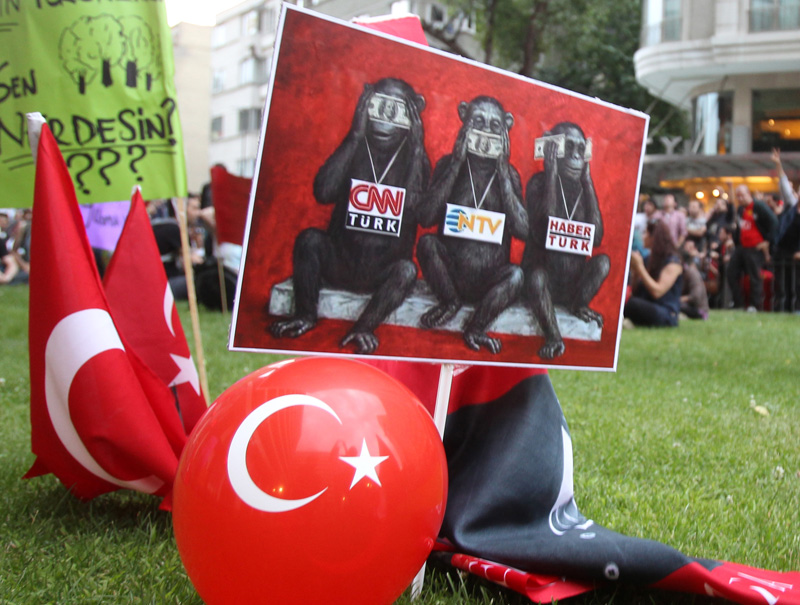
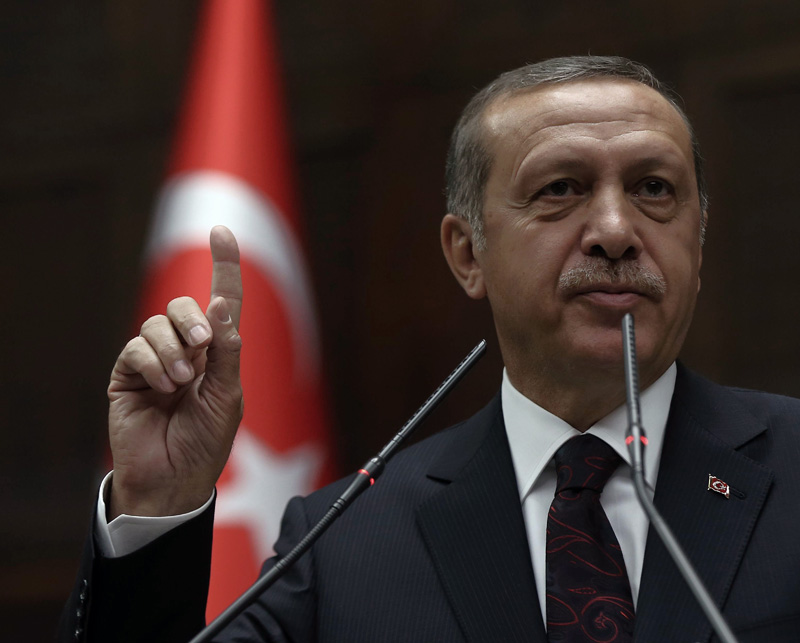
If we have any doubt about the veracity of a tweet, we do not retweet it. New members of 140journos are encouraged to consult with a group of experienced editors via WhatsApp or Facebook. Sometimes a newbie fails to exercise caution and sends a tweet with incorrect information. We own up to mistakes and apologize as soon as they are discovered. That happened recently when a new editor failed to authenticate a photo of a protest; a 140journos follower presented us with proof that the photo was from a previously reported protest.
If I see a tweet with a picture or intelligence from a trusted person in our network, I dig deeper. Early one afternoon in April, I saw a tweet from a city in southeastern Turkey alleging that police made excessive use of tear gas and some primary school students were affected. Attached to the tweet was a picture of two girls lying on a bed in what looked like a hospital. An adult was with them.
On Topsy, I typed in the name of the city and the name of the district, a frequent location for protests, and saw a similar photo from another user. A second tweet with a very similar photo came from the city’s parliamentarian, who follows 140journos. He is a trusted source so we tweeted the news, sticking to the confirmed facts.
As 140journos has gained a wider following, we’ve attracted “pirates”—members of major news channels like NTV, CNN Turk, Haberturk, and Skyturk 360 frustrated by the self-censorship of their own stations—who feed the news they gather to us. The contributions of professional photojournalists have helped us a lot. During the Gezi Park protests, we distributed compelling images from a pirate photojournalist.
More recently, a pirate from a TV station confirmed a tip we had received about an alleged Istanbul protest against controversial spiritual leader Fethullah Gülen, whom Erdogan has accused of working to undermine his administration. Mainstream news outlets reported that Gülen had cursed Erdogan, though not by name, and his supporters during a weekly podcast. The pirate provided us with photos showing anti-Gülen protesters carrying signs saying “Pray Don’t Curse.”
Currently, 140journos receives thousands of tweets a day on everything from protests to local politics. We also host a 30-minute show once a week on Acik Radyo. Now 140journos is moving into an era in which the goal is not only to become a standalone news agency sustained by a network of citizen journalists but a force for creating a civil society, one in which citizens holding divergent views can talk to each other and in which every vote is properly counted.
Plans to build the nation’s first nuclear power plant have sharply divided public opinion, so in 2012 we invited citizens to debate the issue, using the hashtags #YesToNuclearEnergyBecause and #NoToNuclearEnergyBecause. As a host from CNN Turk moderated a public debate at the foot of Galata Tower, we projected the Twitter stream onto the Istanbul landmark.
It was a new experience for many, because our country doesn’t have a long tradition of civil public discussions. We delivered 40,000 pro- and anti-nuclear energy tweets—93 percent against nuclear energy, 7 percent for—to the Turkish Grand National Assembly. The government has not changed its stance on nuclear power, and protests against the plant continue even as construction is stalled due to legal problems.
When local elections took place in March, we enlisted citizen volunteers to tally votes to check against fraud. In the 24 hours following the elections, we collected photos of more than 6,000 pages of official vote tallies, noting inconsistencies between the local tallies and the official results, most of which favored the prime minister’s AKP. The opposition Republican People’s Party filed formal complaints of election fraud. Meanwhile, we continue to analyze vote tallies and refine our crowdsourced system of vote counting as we prepare for the presidential election in August.
When a disaster killed some 300 miners in May, 140journos sent tweets, photos, videos and audio recordings from the mining town of Soma. We interviewed activists, lawyers, rescue team members, and the relatives of miners. In addition, we distributed reports from protests there and across Turkey as mourners demanded accountability from the government.
A better informed citizenry now has a bigger stake in what’s going on in Turkey
Soon we will launch the beta version of Journos, a mobile app that we hope will encourage more citizens to report the news. With Journos, every piece of visual evidence is digitally watermarked with date, source and location information to ensure the integrity of our citizen-reporting network. We ask 140journos contributors to use Vine for video because the app bars users from uploading footage other than clips taken with their phones; the smartphone’s GPS provides the location information. We only publish audio of public figures whose voices we know or recordings from trusted sources. With the new app, 140journos editors and trusted sources can create pages for news about specific subjects, which places a premium on live reporting. Users who try to fool the system will be blacklisted.
For journalists in the mainstream media, Turkey is a tough place to work. But it’s a great place for journalism start-ups because citizens are so hungry for news—and many are willing to help report it.
We started 140journos, first of all, to inform ourselves. But as more citizens join the effort, they are developing a bigger stake in what’s going on. Citizens are willing to put themselves at risk to record what’s happening. There’s a sense of exhilaration and possibility. If that is a byproduct of journalistic citizenship, then it’s something countries well beyond Turkey should welcome.
Engin Onder is a co-founder of 140journos and president and co-founder of the Institute of Creative Minds, an Istanbul-based network of creative professionals
